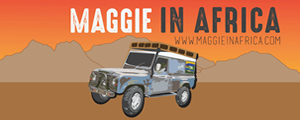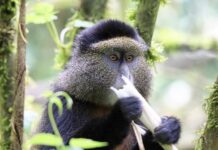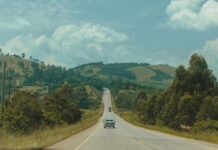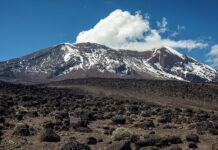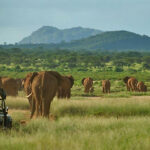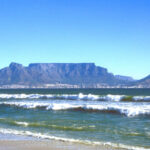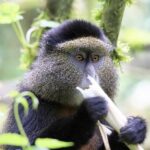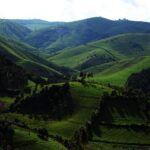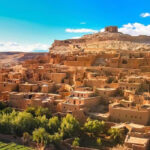For the last two weeks, Noel and I have been waiting patiently in Pretoria for mechanics and overland outfitters to finish with Maggie. And while we’ve been waiting, we’ve been researching the route we’d like to take through South Africa, mostly with the help and advice of friendly locals we’re staying with through Couchsurfing.
We’ve discovered that South Africa has so much to offer overland travellers, which is why Noel and I think that we could easily spend an entire year exploring just this country!
Lovingly referred to as ‘Africa-for-beginners’, South Africa is by far one of the easiest countries on the continent to get your feet wet with a self-drive adventure. For starters, the overlanding community here is huge. And we mean huge – stay anywhere for one day, and its clear that South Africans love 4×4 adventure.
The country also offers a good standard of living and a favourable exchange rate for tourists, making it a much cheaper place to travel than neighbouring Botswana, for example. And the road networks are extensive and so well maintained that a 4×4 is often unnecessary, making South Africa both accessible and affordable.
And if that weren’t enough – although most people travelling to Africa do so for the safari experience, South Africa has so much more to offer than just game parks! From low-budget hostels in the Cape wine route, to luxury safari lodges, the country really does offer just about everything.
So we’d like to share with the world the fruit of our labour – here is our planned route and our top places to see in South Africa.
1. Explore the Mpumalanga lowveld
Although most people travel the the northeast corner of South Africa to view big game at the Kruger National Park, the area west of the park, called the Mpumalanga lowveld, is not to be missed in its own right!
Just a short drive from Johannesburg, the country’s economic capital, the lowveld offers stunning, mountainous landscapes, and plenty of hiking, camping and adventure sports to boot.
The most well-known attraction is the Blyde River Canyon (pictured above), surrounded by a national park. This is the world’s third-largest canyon, and can be explored via the road along the canyon edge or by foot. Noel and I can’t wait to get hiking around!
2. Drive the length of Kruger National Park
South Africa’s claim to fame, the Kruger National Park, is one of Africa’s best game parks. Here, you can view nearly all of Africa’s safari animals, including lions, leopards, cheetahs, elephants, hippos, buffalo, rhino, giraffe and zebra. Discovery channel style.
Plenty of tour operators organise trips into Kruger. But the joy of the park is, in our humble opinion, the ability to explore the park’s vast road network on your own, and camp in a wide range of sites, from government-run bush camps to five star luxury lodges.
We plan to drive the entire length of the park from north to south, a distance of over 400km, and watch the landscape change from tropical forests in the north to the bushvelds of the south. Something tourists rarely get the opportunity to do!
3. Hike around the Drakensberg mountains
The Drakensberg mountains form the highest part of the ‘Great Escarpment’ – South Africa’s central plateau which stretches from all the way from the Cape to Kruger National Park.
And the tabletop landscapes forming the boundary with South Africa and Lesotho are breathtaking.
If exploring San rock paintings and camping in the open under craggy escarpments is your thing – you are bound to love the uKhahlamba-Drakensberg National Park, which became a World Heritage Site in 2000.
Things we hope to do in the Drakensbergs include hiking around Tugela Falls, a series of waterfalls in the Royal Natal National Park, and camping at the ‘amphitheatre’, one of the most impressive cliff faces on earth!
4. Sample ‘bunny chow’ in Durban
We’ve asked many South Africans about visiting Durban, the country’s third largest city, and received a series of exasperated groans. According to them, the city is gritty and not particularly nice to visit unless you’re into overcrowded beaches and surfing.
But what the city might lack in beauty, it makes up for in cultural richness. The city is a real clash of cultures – a mixing of Zulu, Indian and English heritage.
And our favourite of South Africa’s culinary treats – bunny chow – hails from this part of SA, brought over by Indian labourers decades back. Bunny chow is simply a hallowed out loaf of bread filled with tasty vegetable or meat curry. Simple, yet amazingly delicious. We can’t wait to taste the real deal!
5. Drive the ‘Wild Coast’
The Wild Coast is a section of coastline that stretches from Kwa-Zulu Natal to East London in the Eastern Cape, which boasts remote and secluded beaches.
But beaches aren’t all this area is known for. In addition to the stunning coastline, you can also get your fill of local Xhosa culture, hang with the African elephants at the Addo Elephant National Park, or enjoy a hike around one of the region’s many national parks.
Less well-traversed by backpackers than the Garden Route, with slightly more challenging roads, we’re also informed that this part of the country is a joy to self-drive.
6. Wine tasting in the Garden Route
The N1 and ‘Route 62′ through the Western Cape is as iconic to South Africa as Route 66 is to the US. We’re entering quintessential self-drive territory now.
Whether its exploring the wine estates, with Cape Dutch architecture, beautiful coastal towns, or semi-arid mountain passes, this route has enough to keep anyone interested for weeks.
Noel and I are huge fans of South African wines, so we can’t wait to spend a few days hopping vineyards and tasting what the region has to offer!
And while we’re in the area, we also hope to visit Cape Agulhas, the southern-most point of South Africa where the Atlantic and Indian oceans meet, and De Hoop Nature Reserve, where it is possible to whale watch while sliding down sand dunes.
7. Climb Table Mountain in Cape Town
South Africa’s oldest, and arguably most beautiful city has a lot to offer. Including the more than 900 routes up the city’s most iconic landmark: Table Mountain. The 1,000 metre high, flat-top mountain overlooks Cape Town and is surrounded by a national park.
Both Noel and I have visited Cape Town before. But neither of us have climbed Table Mountain. Yet!
While in Cape Town, we also hope to explore Robin Island and the Cape peninsula again, including such historical landmarks as Cape Point and the Cape of Good Hope.
8. Traverse the Great Karoo
The Great Karoo is to South Africa what the Outback is to Australia. As you drive away from the tourist trails of the Cape coastline into thousands of square kilometres of remote and secluded desert landscape, you’re met with wide-open horizons complemented by craggy mountain-scapes and desert flora.
Things to do in this region include exploring the Cederberg Wilderness Area, with its bizarre sandstone formations (pictured above), and caves previously occupied by the indigenous San. Coupled with a never-ending supply of cheap accommodation on working farms, we can’t see what is not to love about this part of South Africa.
9. Safari in the Kalahari (Kgalagadi Transfrontier Park)
A much less touristy alternative to the Kruger National Park, the Kgalagadi Transfrontier Park on the borders of Botswana and Namibia is Noel’s hands-down favourite park in South Africa. He spent a year volunteering here in 2003, and can’t wait to get back to the Kgalagadi.
The main difference between Kruger and the Kgalagadi is the harsh and sandy desert landscape, which makes it much easier to see game, of which there is plenty. This is an excellent destination for those interested in spotting lions, cheetah and meerkats, which reside in the park in abundance.
And just like Kruger, it’s easy to explore this park on its network of well-maintained roads.
10. Richtersveld Transfrontier Park
On the border with Namibia, the Richtersveld Transfrontier Park is one of SA’s most remote and lesser-explored parks, perhaps due to the fact that it’s only accessible by 4×4.
Pictures of the park make it seem like it could have been used for a Star Trek film set – a surreal landscape, sculpted by lava rocks, science fiction-esque vegetation and barren, moon-like terrain.
